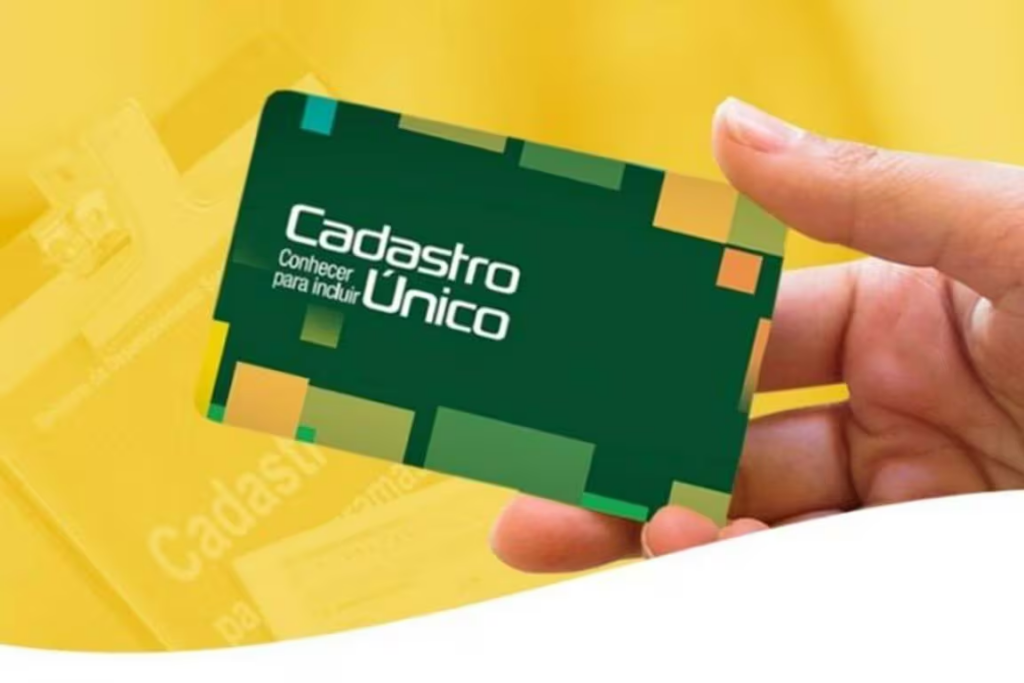How to consult and update the Unified Registry - CadÚnico is an essential tool for identifying and selecting low-income families who are entitled to various federal government social programs, such as Bolsa Família, the Continuous Cash Benefit (BPC), among others.
How to consult and update the Unified Registry
Consulting and updating the Unified Registry (CadÚnico) is a fundamental procedure to ensure that the information registered is correct and up-to-date, thus enabling access to the various social programs offered by the government.
Initially, it is important to identify the place where the Unified Registry is carried out in your municipality. Generally, this registration is done at Social Assistance Reference Centers (CRAS) or at specific service points. After that, you need to schedule an appointment to be seen at the designated location, which can be done by phone, internet or in person, depending on the availability of each municipality.
Before going to the office, it is crucial to gather all the necessary documentation, such as ID, CPF, birth certificate, work permit, proof of residence, among others. In addition, if there are family members with disabilities or pregnant women, it is important to present documents proving this condition.
At the time of the visit, those responsible for the Unified Registry will register or update the information, asking questions about family composition, income, schooling, housing situation, among other relevant aspects. After filling in or updating the information, it is important to review the registered data to ensure that it is correct and complete.
In some cases, it may be necessary to present documents to prove the information provided during the service. These documents may be requested later by the bodies responsible for the Unified Registry to verify the veracity of the information registered.
It is important to note that the Unified Registry must be updated periodically, especially in situations of change in family composition, change of address, change in family income, among others. This ensures that the information is always up to date and accurate.

How do I know if my data is up to date in the Unified Registry?
Knowing if your data is up to date in the Unified Registry is crucial to guaranteeing access to the social benefits offered by the government. Here are some steps to check that your data is up to date:
- Access the System: The first step is to access the Unified Registry system. This can be done through the website of the Ministry of Citizenship or other government portals designated for this purpose.
- User Identification: Generally, in order to access the system, it is necessary to provide identification information, such as CPF (Individual Taxpayer Registration Number) or NIS (Social Identification Number). This information is used to guarantee the security and privacy of registration data.
- Consultation of registered data: Once inside the system, it is possible to consult the data registered. This includes information on family composition, income, education and other relevant aspects. Check that this information is correct and up-to-date.
- Document comparison: After consulting the registered data, it is advisable to compare it with your personal documents. Check that there have been no changes in family composition, address, income or other relevant information that has not been updated in the Unified Registry.
- Updating data: If you identify any outdated or incorrect information, it is important to update your data. This can be done through the Unified Registry system itself or by going to a Social Assistance Reference Center (CRAS) or designated service point in your municipality.
- Confirming the Update: After making the necessary updates, make sure that the changes have been duly registered in the Unified Registry system. This can be done by looking at the registered data again and checking that the updated information is correct.
- Periodic Maintenance: It is important to remember that the Unified Registry must be updated periodically, especially in the event of changes in family composition, address, income or other relevant information. Keep your data up to date to ensure continued access to social benefits.
This is the best way to check and update the Single Registry online. In this way, the benefits granted by the government will be maintained.
How long does it take to update the Unified Registry in the system
The time it takes to update the Unified Registry can vary depending on several factors, such as the form of update chosen, the demand on the agency responsible, the availability of the necessary documents and the complexity of the information to be updated.
First of all, if you carry out the procedure of how to consult and update the Single Registry on the internet, the process can be relatively quick. Generally, updates made through this system are processed in real time, which means that changes can be viewed immediately after they are made.
If you choose to update the Unified Registry in person, the time required may vary according to the demand at the service location. In some cases, it may be necessary to schedule an appointment to carry out the update, which can increase the total time of the process.
After updating the Unified Registry, the data provided is subjected to analysis and processing by the responsible bodies. This process can take some time, especially if there are a large number of updates being processed simultaneously.
Finally, once the updates have been processed, it is important to check that the changes have been duly registered in the Unified Registry. In some cases, it may be necessary to wait an additional period for the changes to be reflected in the system and officially confirmed.
Who should update the Unified Registry?
Updating the Unified Registry is the responsibility of the beneficiaries and those responsible for their families.
First of all, the responsibility for updating the Unified Registry lies with the beneficiaries of the social programs themselves, i.e. the low-income families who are registered in the system. It is essential that these families are aware of the importance of keeping their information up to date and try to update it whenever necessary.
In addition, in many cases, a family representative is appointed to represent the family in the Unified Registry. This guardian is usually the member of the family who is over 16 and has the legal capacity to represent the other members.
The Unified Registry must be updated periodically, especially in situations of change in family composition, change of address, change in family income, as mentioned above. It is important that beneficiaries are aware of these changes and try to update the register as soon as possible.
It is the duty of the bodies responsible for managing the Unified Registry to make beneficiaries aware of and advise them on the importance of updating their registration and the procedures required to do so.
The bodies responsible for the Single Registry should also offer support to beneficiaries who need help updating their registration. This can include assistance in filling in the forms, clarifying doubts and guidance on the necessary documentation.
How to view my Unified Registry on my cell phone
Now that you've understood how to consult and update the Unified Registry on the internet, the procedure is similar for cell phones. See step-by-step:
- Official Unified Registry application: The Ministry of Citizenship provides an application that can be downloaded free of charge from mobile application stores such as the App Store and Google Play Store. After downloading and installing the app, you can access your registration information directly from your cell phone.
- Browser access: If you don't want to download an additional application, you can also access the Unified Registry via your cell phone's internet browser. Simply open the browser and type in the Cadastro Único email address provided by the Ministry of Citizenship.
- User identification: To access your Cadastro Único via your cell phone, you will need to provide identification information, such as your CPF (Individual Taxpayer Registration Number) or NIS (Social Identification Number).
- Consultation of registered information: Once inside the system, you will be able to consult the information registered in the Unified Registry, including data on family composition, income, schooling, among other relevant aspects.
- Updating your data: If you identify any outdated or incorrect information, you can update your details directly via your cell phone, following the guidelines provided by the system. Be prepared to provide supporting documents, if necessary, to validate the updated information.
- Data security: When accessing your Cadastro Único by cell phone, make sure you are using a secure and reliable connection to protect the privacy of your data.
What you need to bring to Cras to update your registration
To update your CRAS (Social Assistance Reference Center) registration, it's important to be prepared with the necessary documentation to ensure that the process is completed efficiently and without complications.
- Personal Identification Document: Bring personal identification documents for all family members who will be included in the register. This can include an identity card (RG), CPF (Cadastro de Pessoa Física), birth certificate, marriage certificate, work permit, among others.
- Proof of Residence: It is essential to present an up-to-date proof of residence in the name of the person responsible or a family member. This document is essential to confirm the address and location of the home.
- Proof of Income: Have proof of income on hand for all family members with formal or informal income. This can include payslips, income statements, pay stubs, bank statements and other documents that prove the family's source of income.
- Cadastro de Pessoa Física (CPF): The CPF is an essential document for registering in the system and must be presented to all family members who have this document.
- Specific documents: Depending on the family's situation, other specific documents may be required to complete the registration update. This may include documents related to family composition, such as children's birth certificates, documents proving a disability, among others.
In addition to the documents mentioned above, it is important to be prepared to provide additional information that may be requested by CRAS professionals during the registration update process.
This can include information on family composition, housing situation, income, schooling, among other aspects relevant to assessing the family's socio-economic situation.
What is the income requirement for the Unified Registry?
However, there is no fixed amount of income established as the sole criterion for completing the Unified Registry. Eligibility is determined based on criteria established by the specific social programs that use the Unified Registry as a selection tool.
In the case of Bolsa Família, for example, the program uses per capita family income ranges as eligibility criteria. Families must have a per capita income of up to half the minimum wage in order to register for Bolsa Família and have access to the benefit.
For other social programs that use the Unified Registry, the income criteria may vary. Some programs may have higher or lower income limits, depending on the objectives and specific policies of each program.
You can have two Unified Registers at the same address
Finally, now that you understand how to consult and update the Unified Registry, more questions arise among beneficiaries, such as the possibility of having more than one record in the program.
It is essential to clarify that, according to the Unified Registry guidelines, it is not allowed to have two active registrations at the same address, in order to avoid duplicate information and ensure the accuracy and efficiency of the system.

The Unified Registry is designed as a consolidated database that gathers information on low-income families across the country, making it easier to identify and select these families for access to the various social programs offered by the government.
To avoid duplicate registrations, measures and controls are implemented, such as validating documents and information provided by families during the registration process. If two families try to register at the same address, this is likely to be identified as an irregularity during data analysis.
The existence of two unique registers at the same address can lead to confusion in the records and distribution of social benefits, compromising the effectiveness and transparency of social programs. It is therefore crucial that families avoid duplicate registrations and provide accurate and up-to-date information during the registration process.
In the case of special situations that justify the presence of more than one family at the same address, such as cohabitation in the same home, it is necessary to contact the bodies responsible for the Unified Registry to clarify the situation and seek guidance on how to proceed correctly.
See also: How can I find out my PIS number using my CPF? See the ways to check
April 3rd, 2024

She has a degree in Literature - Portuguese/English, and is the creator of the Escritora de Sucesso website. As a writer, she seeks to expand everyone's knowledge with relevant information on various subjects. At Trend-Topics, she brings news and content ranging from entertainment to the country's economic situation.






